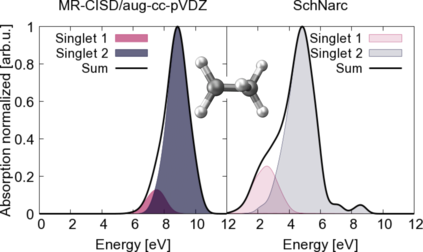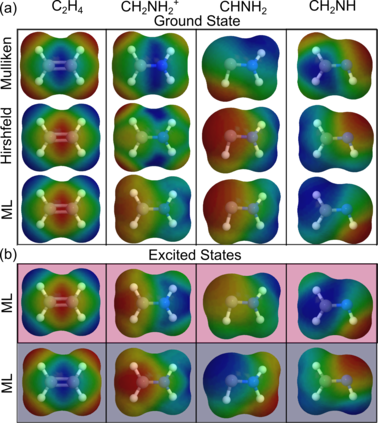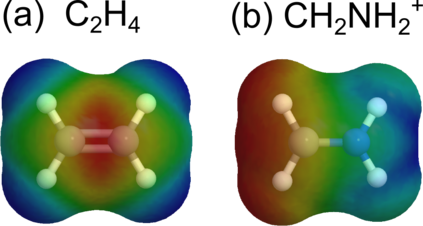Machine learning (ML) has shown to advance the research field of quantum chemistry in almost any possible direction and has recently also entered the excited states to investigate the multifaceted photochemistry of molecules. In this paper, we pursue two goals: i) We show how ML can be used to model permanent dipole moments for excited states and transition dipole moments by adapting the charge model of [Chem. Sci., 2017, 8, 6924-6935], which was originally proposed for the permanent dipole moment vector of the electronic ground state. ii) We investigate the transferability of our excited-state ML models in chemical space, i.e., whether an ML model can predict properties of molecules that it has never been trained on and whether it can learn the different excited states of two molecules simultaneously. To this aim, we employ and extend our previously reported SchNarc approach for excited-state ML. We calculate UV absorption spectra from excited-state energies and transition dipole moments as well as electrostatic potentials from latent charges inferred by the ML model of the permanent dipole moment vectors. We train our ML models on CH$_2$NH$_2^+$ and C$_2$H$_4$, while predictions are carried out for these molecules and additionally for CHNH$_2$, CH$_2$NH, and C$_2$H$_5^+$. The results indicate that transferability is possible for the excited states.
翻译:机器学习(ML)显示几乎任何可能的方向都能够推进量子化学的研究领域,最近也进入了兴奋状态,以调查分子的多元光化学。在本文中,我们追求两个目标:(一) 我们展示如何利用ML为兴奋状态和过渡状态的极点模拟永久极点时刻,调整[Chem.Sci.,2017年,8,6924-6935]的充电模式,该模式最初是为电子地面状态永久极点瞬时矢量量量而提议的。 (二) 我们调查了我们在化学空间的兴奋状态ML模型的可转移性,即:ML模型能否预测它从未受过训练的分子的特性,以及它能否同时学习两个分子的不同兴奋状态。为此,我们采用并推广我们以前报告的SchNarc 方法用于兴奋状态 ML。 我们从兴奋状态能量和转型时速值$$中计算出UV吸收光谱,以及由永久极点瞬时值2美元模型推断出的电静态潜力。我们用ML2的ML2 CH2 预测值是额外的CH2 美元。










